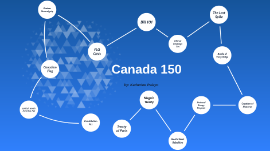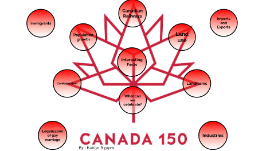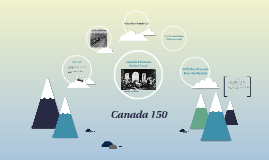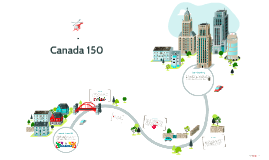Canada 150
Transcript: By : Kaitlyn Nguyen What can we celebrate? What can we celebrate? Ever since the existence of the Dominion of Canada, we have come to be a big diverse country This is how things changed or stayed the same. in 2017 we are celebrating 150 years of canadian history Various tourist attractions showcase natural beauty. Some are formed by glaciers and erosion, resulting in natural attractions such as flowerpot rocks in Ontario. These flowerpot rocks, also known as hopewell rocks, are made up of sandstone rock and sedimentary rocks. tectonic activity tilted then 30-45 degree angles. Landforms Landforms Canadian shield Canadian shield The Canadian shield covers more than half of Canada. It covers Nunavut, Quebec, Labrador, Ontario, Manitoba, a large part of Saskatchewan and lesser parts of Alberta and the NorthwestTerritories. some of the worlds oldest rocks can be found in the Canadian shield. There are boreal forest in the South, and tundra in the North Between 1867 and 2017 the amount of land has remained the same at 9,093,510 sq. km of land in Canada. Land use Land use Forest area in 1990 fell from 3.48 million sq, km to 3.47 million sq. km in 2015. Canada's forest area has only decreased by 0.34% . This shows that the forest area has been stable from 1990-2015. . Canada has 9% of the world's forest most of which are boreal forest. Forest area Forest area 701,040 sq. km of land was used for agricultural practices in 1967. Most of this agricultural land is sitated in the interior plains. Most of the area i s covered in flat land whcih makes it easier to do agrucultural practices, but also ideal places to put factories. Since then there was been a decrease in that area since it is now used for industrialization. With new technology less agricultural farmers are needed. Agricultural land use Agricultural land use Canada's population has grown because of high rates of fertility and immigration. Dependency load (2017)- 33% of the population Working age- 67% Population density- 4 people per sq. km Urban population- 82.2% Population growth Population growth Canada had an estimated population of 3.4 million people in 1867. This number is very small because at the time, only 4 provinces were involved in the Dominion of Canada. Based on the latest census, the current population in Canada is about 36 million. This change in population has increased mainly because of natural inc rease, new immigrants and lower death rates. We now have better healthcare, newer technology, access to more services which keeps us alive and healthy. Urbanization in the west has been advertised well through the media. Population Population There used to be higher birth rates so children could work in farms, but that is no longer needed because of technology. There is an average 1-2 children per woman in Canada. Death rates are decreasing due to longer life expectancy. In 1931, the life expectancy for both men and momen was about 61 years for men and momen. In 2014 life expectancies have risen to abot 80 years for both men and women. There is about 7-8 death per 1,000 people in Canada. Birth and Death Rates Birth and Death Rates The confederation first started in 1867 with the 4 existing provinces: Ontario, Quebec, New Brunswick, and Nova Scotia. The latest territory to join the confederation is Nunavut in 1999. Confederation Confederation The intercolonial railway was one of the reasons why the confederation was founded. With a railroad in place there would be more trade aand faster transportation. The Usa were less likely to attack Canada if it were a self-governing country. The threat of the Americans expanding into British North America. Why make the confederation Why make the confederation Canada was the fourth country to legalize gay marriage. Ontario and British Columbia became the first two provinces to legalize the liscensing of gay marriage in 2003. Civil marriage act in 2005 made same-sex marriage legal accross Canada. Legalization of gay marriage Legalization of gay marriage Ontario- June 10, 2003 New Brunswick- 23 June 2005 British Columbia- July 8 2003 Quebec- March 19 2004 Yukon- July 14 2004 Manitoba- September 6 2004 Nova Scotia- September 24 2004 Saskatchewan- November 5 2004 Newfoundland and Labrador- December 21 2004 Alberta, Nunavut, Prince Edward Island, Northwest territories- July 20 2005 (Civil marriage act) Dates Dates Thriving industries in Canada are automotive industries, forestry, oil, gold and silver mining. Industries Industries The automotive industry has been one of Canada's most important manufacturing industries because it is one of Canada's main drivers of manufactured imports and exports as well as employment and industrial production. Automotive industry Automotive industry The Alberta Oil Sands provide great economic value. Contributes to the labour force and economy. Alberta Oil Sands Alberta Oil Sands The forestry Industry provides a lot of economic, social and environmental benefits. Forestry can be done

















